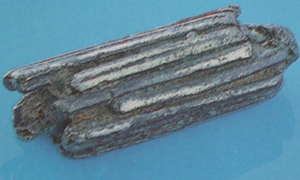Jan 25, 2016
Visual Images, Metaphors and Cultural Knowledge
The arts of a people offer an illuminating view of its culture, and hence of its thought processes, attitudes, beliefs, and values. The art of a particular culture can reveal ever-changing human images and attitudes, so awareness of a people’s indigenous art, visual and cultural symbols can become an important medium for cross-cultural understanding. “Just as written documents [that utilize phonographs] materialize history in literate communities,” as pointed out by Fraser and Cole (1972, p. 313), “so in traditional societies, art forms make the intangible past more real.” Some of these art forms like the adinkra and kente cloths of the Akan and the Ewe utilize pictograms and ideograms, and are pregnant with text that symbolizes ideas on several levels of discourse.
In Ghana, visual references to the indigenous arts are everywhere, in clothing, architecture, billboards, corporate advertising, tourist items, on vehicles, and myriad forms. Ghanaian art, from sculpture to body art, is symbolic and representational. Ghanaian art is the way of life of its people. The life of the Ghanaian is made up of two components: physical ( things physically seen such as stools, pots, wooden dolls etc.) and theory (symbols, abstractions such as proverbs, storytelling, songs and dance). It therefore becomes difficult to separate art from life. This makes Ghanaian art, like the arts of many native cultures, unique.
In Ghana, as in many areas of the world, the meanings attached to indigenous art forms are based on larger philosophical foundations. Those meanings are at the crux of the ongoing struggle in the minds of many Ghanaians over the appropriateness of Ghana's traditional arts in their contemporary education system. The indigenous arts are caught in the crossfire between the need to protect and project the country's unique cultural heritage and the adoption of a perceived modernity.
Ghanaian visual arts include painting (pictorial composition), graphics (lettering, packaging design, print making, book illustration), crafts (textiles and embroidery, pottery, sculpture, puppetry, basketry and weaving, calabash decoration, canoe decoration, leather works, and wall decoration – mosaic, collage, murals, stained glass). These arts constitute a major source of the cultural knowledge of Ghanaians.
Western cultures are so involved in written language that they have not seriously studied how humans structure information visually. However, Rudolph Arnheim (1969) differs from most of his fellow cognitive psychologists in that he is against the imposition of the print culture bias in research on human information processing models. Arnheim argues that those entrenched in this approach to research are only studying those psychological processes involved in the needs of a print culture. These models do not focus on the nature of those relational modes of cognition associated with the right cerebral hemisphere of the mind. They neither deal with visual thinking and its concern for the simultaneity of structures nor do they concern themselves with the role of affectivity in processing socio-cultural values.
Click here to visit gallery

